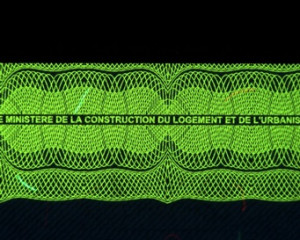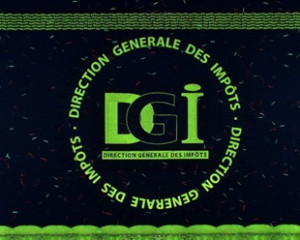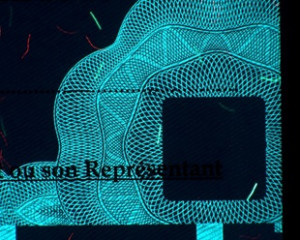Post No. 1. The beginnings
In 1934 Robert (Bob) and Joseph (Joe) Switzer established their first company, the Fluor-S-Art Co., and partnered with San Francisco artist Delmar Gray to produce fluorescent displays for commercial advertising.
Today it is not only common to use invisible luminescent prints in contemporary security documents, banknotes but in some cases, it is even mandatory (see ICAO Doc. 9303 e.g.).
But, it was not always so. Up to my best knowledge the first fluorescent security prints appeared on Postal Stamps in the early sixties in the US. They were rather tagged prints for automatic identification by sorting machines.
I am sure you could have more information on the first application of invisible security prints, please share it!
Anyway, I think the first trials could have looked like these:
  |
 |
|
Normal light |
UV light (365 nm) |
Now, for those who work with security document prints like this may seem to be a bit boring but believe me, even nowadays, for those who are not familiar with this business the glowing prints under UV light is a miracle. And now try to imagine what a non-professional citizen could feel staring at these prints when in the seventies even the TV was black and white!
And where is the “beauty”? – you may ask. Just have a closer look at the UV image and you will see the interfering fine, fluorescent lines!
 |
 |
|
Round guilloche and guilloche with micro writing |
|
These relatively simple prints are still required and serve very well. They are maybe the most well known second level security devices that are easy to check with a simple UV lamp.
 |
 |
|
UV 365 nm image of documents in circulation printed by ANY |
|
Although, the old guilloche system already builds up from fine lines there are more possibilities lying in micro-printing. But these features worth a new post!
